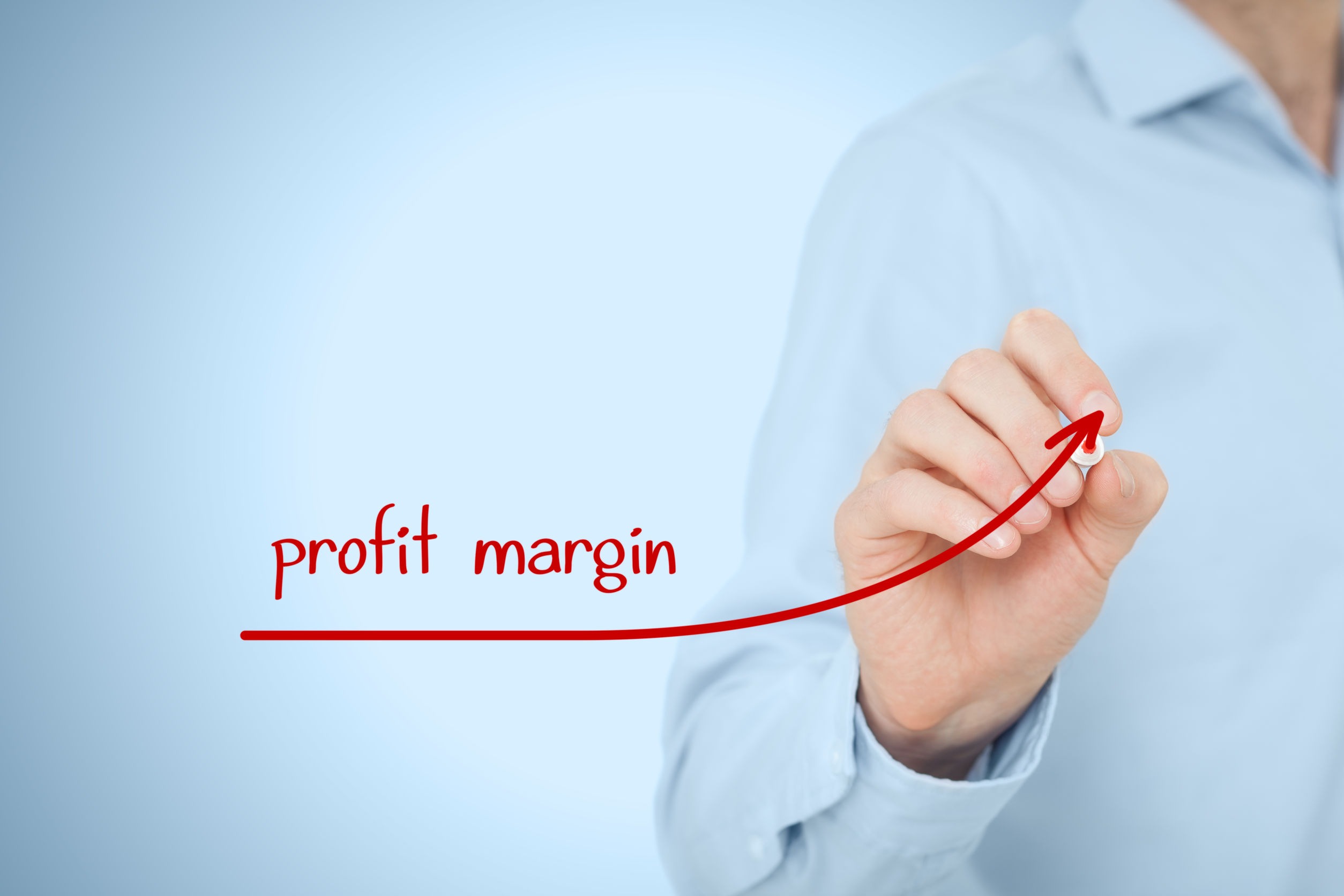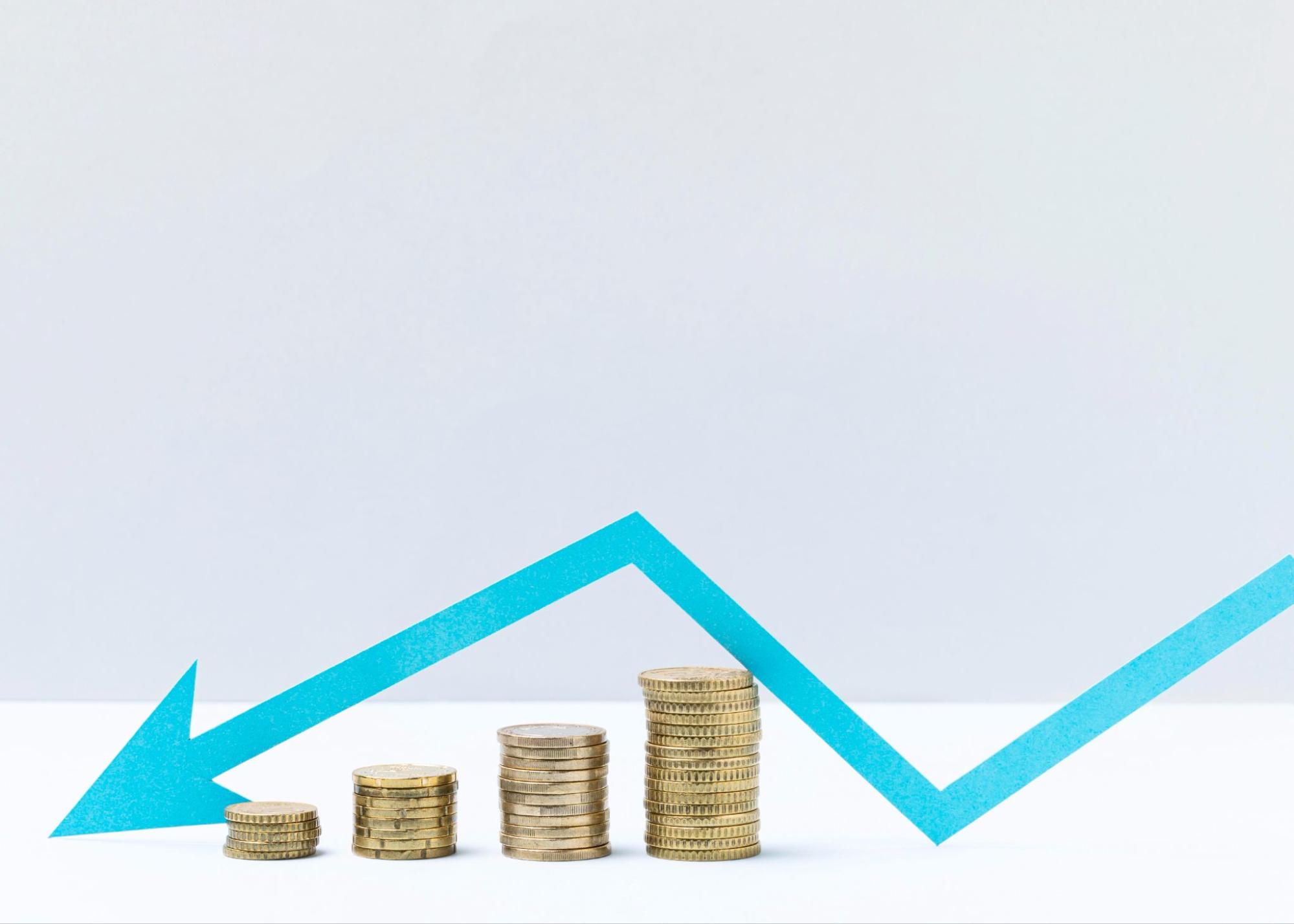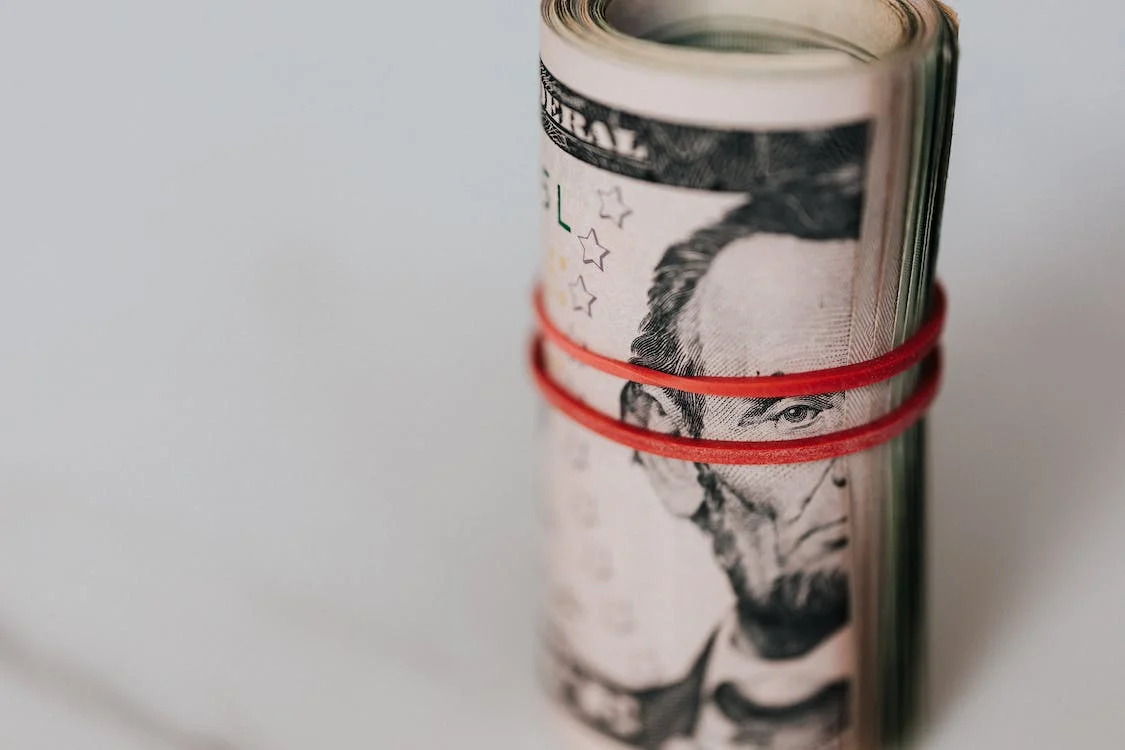Dropshipping Profit Margins: The Complete Guide for 2025

In 2023, nearly a third of online stores turned to dropshipping, a trend that's only growing. Why? Dropshippers act as the bridge between suppliers and shoppers by taking on marketing without dealing with the hassle of stock inventory. Lower costs, however, don't always mean easy profits.
To thrive in dropshipping, it's essential to understand and maximize your profit margins. Are you earning enough from each sale? Are some products more profitable than others?
Let's dive into how to calculate and boost your dropshipping profit margins, which ensures your business isn't just busy but profitable.
Table of Contents
What Is the Average Dropshipping Profit Margin?
Key Profit Margin Metrics for a Dropshipping Business
How to Calculate Dropshipping Profit Margins
What Costs are Associated with Dropshipping?
What Is a Good Dropshipping Pricing Strategy?
How to Increase Your Dropshipping Profit Margin
How Spark Shipping Can Help Increase Profits
What Is the Average Dropshipping Profit Margin?

You are probably asking, “What is a good profit margin for my online business?”
Determining an average profit margin for dropshipping is challenging due to differences that exist among individual dropshippers. The average margin for dropshipping stores ranges from 10% to 30%, but your average will differ based on your business model, niche, and products.
At a minimum, your margins should be at least 10%—if they’re any lower than that, something needs to change in your business. As a beginner, it’s good to shoot for a 20% profit margin, although getting it as high as possible is ideal.
Key Profit Margin Metrics for a Dropshipping Business
⬆️Cost of goods sold (COGS)
Your cost of goods sold (COGS) is how much you spend to buy products from your suppliers. COGS is usually a drop shipper’s biggest cost, so the lower you can get your COGS, the better your profit margins will likely be.
⬆️Average order value (AOV)
Average order value (AOV) is a key metric in e-commerce and retail, and it also holds particular importance in the dropshipping model. AOV represents the average total of every order placed in your store over a set period.
To calculate AOV:
📊Average order value = Total revenue / Number of orders
For instance, if a dropshipping store generated $5,000 from 100 orders in one month, the AOV would be $50.
One way to increase your average dropshipping profit margin is by raising your average order value (AOV)
|
💡Pro-tip: How to boost AOV ✅Offer bundled deals or discounts on multiple items. ✅Recommend related products or provide "frequently bought together" suggestions. ✅Offer limited-time promotions or discounts for orders over a certain amount. ✅Include a free gift for orders over a specific value. ✅Implement a loyalty or reward program to encourage higher spending. |
Understanding AOV in dropshipping is crucial because even a small increase in AOV can significantly boost profits, especially when operating on low-profit margins.
⬆️Conversion rate
e-Commerce conversion rates represent the percentage of visitors to your store who make a purchase. It's common for these rates to be in the single-digit percentage range, with a rate that falls between 2.5% and 3% typically regarded as acceptible.
To determine the conversion rate for your dropshipping store, divide the total number of orders by the total number of unique visitors:
📊Conversion rate = Number of orders / Number of unique visitors
To increase the number of unique visitors to your store, focus on enhancing your click-through rate. Here are some effective strategies to boost conversion rates:
✅High-quality product images and descriptions: Use high-quality product images and write enticing product descriptions.
✅Optimize website design: Make sure it's mobile-responsive, features a clean and intuitive layout with easy navigation and checkout, and prominently showcases customer reviews and testimonials.
✅Transparent pricing: Display all costs, including shipping, taxes, and additional fees.
✅Implement exit popups: Capture users about to leave your site with special offers, discounts, or prompts to sign up for newsletters.
✅Retargeting and remarketing: Use ads to target visitors who didn't convert on their first visit.
✅Optimize for search: Ensure that potential customers can easily find your products via search engines.
✅Easy checkout process: Minimize the number of steps in the checkout process.
⬆️Shipping
Since over 66% of shoppers expect free shipping, offering free shipping on all of your products is best. Of course, the “free” shipping isn’t truly free. Shipping costs can be a significant expense for e-commerce stores.
You will need to think strategically and roll the cost of shipping into the item's final price. For example, if the product is normally $15, you might price it at $20 to account for the shipping cost.
Some suppliers will offer you shipping included on every order, while others require you to fulfill shipping yourself. At any rate, shipping is a cost that you need to consider when you calculate your dropshipping profit margins.
|
💡Pro-tip: Spark Shipping connects you to a range of dropshipping suppliers and you can select the wholesaler with the best shipping costs to improve your bottom line! Request a demo today! |
⬆️Returns
Unfortunately, shoppers will sometimes return the items they buy from you; that’s just a reality of e-commerce. Returns are expensive and somewhat annoying, but they’re a cost of doing business.
On top of that, many returns will reach you in unusable condition, so returns are usually written off as a loss. It is a good idea to track your average number of returns over time so that you can accurately factor in this cost.
How to Calculate Dropshipping Profit Margins

Calculating your dropshipping profit margin is simple.
You can calculate three types of profit margins: the gross profit margin, the net profit margin, and the per-product margin.
These margins measure how efficient a dropshipping store is at generating profits.
1️⃣Gross product margin
The gross profit margin is a vital indicator of the profitability of your dropshipping store per sale, as it considers the costs associated with each transaction.
This metric is straightforward to calculate and it shows the direct profit on products sold.
Start by identifying your gross profit, which is the total sales revenue minus the cost of goods sold (COGS):
📊Gross Profit = Total Revenue - COGS
Next, calculate the gross profit margin by dividing the gross profit by the total revenue:
📊Gross Profit Margin = Gross Profit / Total Revenue
Example:
Suppose you run a dropshipping store focused on fitness equipment. In the past month, you recorded sales of $50,000. The cost of acquiring these products, or the COGS, was $35,000. To find out your gross profit:
$50,000 (Total Revenue) - $35,000 (COGS) = $15,000 (Gross Profit)
To calculate the gross profit margin:
$15,000 (Gross Profit) ÷ $50,000 (Total Revenue) = 0.30
Thus, your gross profit margin is 30%.
This indicates that for every dollar you earn in sales, $0.30 is profit after having deducted the direct costs of the products.
2️⃣Net profit margin
After accounting for all other expenses besides the direct product cost, net profit is the actual profit.
❗Determine additional costs: Add up transaction fees, advertising costs, platform fees, returns, and any other operational expenses.
The formula for Net Profit:
📊Net Profit = Gross Profit - Additional Costs
Example
To calculate net profit, you must subtract all expenses from the gross profit, not just the COGS. Expenses might include operational costs, marketing and advertising expenses, transaction fees, salaries, rent, and other overheads.
Below is a hypothetical breakdown for the sake of illustration:
Expenses:
Marketing and Advertising: $2,000
Transaction Fees (credit card processing, platform fees, etc.): $1,000
Operational Costs (website hosting, utilities, software subscriptions): $500
Miscellaneous (returns, damaged goods, etc.): $500
Total Expenses:
$2,000 + $1,000 + $500 + $500 = $4,000
Net Profit Calculation:
📊Gross Profit ($15,000 from the previous example) - Total Expenses ($4,000) = Net Profit
$15,000 - $4,000 = $11,000
Based on the provided expenses, the net profit for the month would be $11,000.
3️⃣Per product margin
This reflects the profit on a per-item basis, which is valuable when analyzing the profitability of individual products within your dropshipping store.
The formula for Per Product Profit:
📊Per Product Profit = Selling Price of Individual Product - Cost of Goods Sold (COGS) for that Product - Additional Costs per Product
The formula for Per Product Margin Percentage:
📊Per Product Margin (%) = (Per Product Profit / Selling Price of Individual Product) x 100
If you sold a specific product for $100 and its COGS was $60, with an additional cost of $10 per product, the per-product profit would be $30. The per-product margin would be (30/100) x 100 = 30%.
What Costs are Associated with Dropshipping?
Dropshippers typically see profits that are 50% higher than merchants who maintain their own inventory. This happens because, instead of having to grapple with costs associated with product design or warehousing, dropshippers primarily handle logistics and sales.
That said, while dropshippers generally have reduced overheads, running a successful dropshipping store isn't without its share of expenses.
Knowing product margins is easy, but figuring out the exact costs can be tricky. You need to know all your costs to determine your real profit.
When checking your finances, look at all business costs. To understand your dropshipping profits better, include these costs:
💸Taxes
Regardless of where you work, you likely have to pay some taxes. Are you paying sales tax? Federal or state taxes? Monthly or quarterly taxes to the IRS? Don’t forget that taxes count as a liability against your earnings, so factor them into your costs.
💸Marketing
You need to get the word out about your products. That doesn’t come free, so you need to account for all of your marketing expenses, which include:
🔸Influencer partnerships
🔸Paid ads
🔸Marketing software
🔸SMS campaigns
🔸Email marketing
🔸Podcast equipment and hosting fees
💸Fees and commissions
As a dropshipper, you don’t have to worry about storing products yourself, but since you work as a middleman, you have a lot of fees that you need to pay other parties. This can include:
🔸Fees paid to dropshipping platforms like Shopify or Magento
🔸Fees to e-commerce platforms like Amazon, eBay, Walmart, or Etsy
🔸Commissions paid out to affiliates
There’s nothing wrong with relying on another platform to bring in business, but it’s important to factor these costs into your profit margins.
Ensure you read the fine print before working with a third party so you understand all of the “gotchas” and fees before signing on the dotted line.
What Is a Good Dropshipping Pricing Strategy?

Numerous factors can influence dropshipping profit margins. Although trimming your expenses can enhance these margins, implementing an effective pricing strategy is a key approach to elevate revenue.
Simply put, a pricing strategy determines how you set product prices. The goal is to pinpoint a price that maximizes your profit without deterring potential customers.
When developing a robust dropshipping pricing strategy, ensure you consider the following aspects:
🛍️Your audience
What do your shoppers want? Does this product fulfill a need? How much will they spend on this item? How will shoppers react to pricing changes?
|
💡Pro-tip: Cater your pricing to your target demographic. High-end audiences may be less price-sensitive, while bargain hunters will be looking for the most competitive prices. |
🛍️The competition
Your pricing needs to be competitive enough to have an advantage over the competition. The problem is that dropshipping often becomes a race to the bottom, which can hurt your margins.
Know what your competitors are charging, but don’t let that dictate your entire pricing strategy—otherwise, you’ll never turn a profit.
🛍️Expenses
Understand the direct costs associated with each product. This includes what you pay the supplier for the item.
|
💡Pro-tip: Remember to account for any taxes, import fees, or other costs that might apply. Also, buffer your margins against unforeseen costs, returns, or other issues. |
🛍️Psychological pricing
Like it or not, psychology affects dropshipping prices. You want to price based on perceived value or what shoppers think is worth.
For example, if you sell a luxury item for $10, shoppers will likely think it’s low-quality simply because it’s cheap. You have to understand the psychological factors at play to boost margins.
Wielded skillfully, a dropshipping pricing strategy can help you avoid underpricing (and overpricing) while staying competitive in your niche. If you’re tired of playing a guessing game with product pricing, try these dropshipping pricing strategies to add more structure to your pricing.
|
💡Pro-tip: Techniques like charm pricing ($9.99 instead of $10) can make products seem more affordable. |
33% Rule
With the 33% rule, you break down the final price of a product into thirds:
🔸One-third for marketing
🔸One-third for COGS
🔸One-third for profit
This is a straightforward way to price your products and if you’re just getting started, it’s an easy way to ensure that you stay profitable.
Fixed dollar
With the fixed dollar dropshipping pricing strategy, you apply a fixed dollar amount to the product’s price. For example, if you buy most of your products for $1, you can add $9 to each product across the board and sell everything for $10.
This approach is ideal if you sell lower-cost items that are similar. However, if you sell various products with different price points, the fixed dollar strategy might need to be applied in a more considered manner.
Fixed percentage
A fixed percentage allows you more flexibility than the fixed dollar approach. This way, you can customize the price for every product.
To use the fixed percentage dropshipping pricing strategy, you’ll apply a particular percentage to all of your products. For example, maybe you apply a 300% markup to your COGS, which will become the final price for each item.
|
💡Pro-tip: Consider dynamic pricing. Adjust prices based on demand, stock levels, or competitor pricing. Some businesses use software that adjusts prices automatically. |
🛍️Perceived value
A perceived value pricing strategy is all about charging based on what customers think a product is worth, not what it actually costs you. So, even if you get a product for $1, you might sell it for $40 if customers see it as valuable.
You’d need a good brand, a nice website, great pictures and videos, and top-notch customer service to use this strategy well. It also means you’ll need to figure out how much your new customers are willing to pay, so think carefully before diving in.
How to Increase Your Dropshipping Profit Margin

At this point, you’ve calculated your profit margins and picked a pricing strategy. But even then, you might notice that your net income is not as high as you’d like it to be.
Profit margins rely on optimizing your expenses and your pricing—and fortunately, there’s a lot you can do to influence these two important variables. If it’s high time to boost your profits, follow these five tips to increase your dropshipping profit margins and run a successful online store.
🚀Offer product bundles
Do you want to sell more products in each transaction? Try bundling. This is when you lump several items into one bundle, typically marketed as a “starter kit” or a “customer favorites” collection.
You can command a higher price for bundles, which is good news for your profit margins. Bundling is a great strategy because it allows you to sell bundled products in one go and save on expenses, because you don’t have to separately market or pay fees for all of the products piecemeal.
🚀Automate where you can
As you grow your dropshipping business, you’ll quickly realize that you can’t do it alone. Even if you hire a team to help you, there’s too much work for you to handle, particularly without automation.
Human labor is expensive and time-consuming, so automating certain finicky tasks to reduce your labor costs makes sense.
Solutions like Spark Shipping allow you to minimize the hands-on time and expenses of managing your business. Plus, with real-time pricing updates, you can optimize your margins 24/7 while boosting profits.
🚀Negotiate with your suppliers
In e-commerce, dropshipping stores and suppliers work hand-in-hand, with both sides influenced by sales volume and market demand. As a dropshipper, you should negotiate for bulk-buying or pay wholesale rather than retail prices.
As your business expands, your significance to the supplier grows, too. Feel free to discuss a custom agreement with your dropshipping supplier that can increase both your profitability and the volume of orders they get from you.
|
💡Pro-tip: Relationships don’t form overnight, though. Put in the work to get to know your supplier and build trust. They’ll be more likely to work with you if you prove you’re an all-star client. |
🚀Sell in-demand products
As a dropshipper, the products you select to sell can significantly influence your profit margins. Hence, it's crucial to make informed choices. Opt for products that are currently trending that offer a good dropshipping profit margin.
Niches such as home goods or pet accessories have high product margins. Even though selling electronics or fashion items might seem appealing, these categories often respectively present challenges such as outdated inventory or issues with sizing. It's advisable to lean toward products with a niche market and a lower likelihood of returns.
Use platforms like TikTok, Google Trends, or Amazon Analytics to spot the best dropshipping products. Before you fully invest, test new products by monitoring sales for a few months. If margins are low, switch products. As you learn, recognizing profitable products will get easier, and remember, experimentation is key to finding your winning products!
🚀Sell on multiple platforms
Starting with your own Shopify store is good, but attracting visitors can take a lot of work. To boost sales and profits, consider selling on big online marketplaces.
Sites like eBay, Amazon, Walmart, and Etsy connect you to many buyers. But remember, these sites have rules and fees. So, pick the one that fits your business best.
It's a good idea to start with one site. This way, you can learn how it works without being swamped with too many orders at once.
How Spark Shipping Can Help Increase Profits

Dropshipping is an innovative business model for e-commerce, but that doesn’t mean it’s always sunshine and roses.
The key to successful dropshipping is minimizing your expenses and maximizing your earnings to come out on top. It’s good to minimize your expenses, but savvy pricing is a must for boosting your profit margins.
The thing is, you can’t approach pricing willy-nilly. It has to be methodical, and that requires real-time adjustments. If you want pricing that changes dynamically and allows you to bypass the manual work, go with Spark Shipping. We automate dropshipping businesses to increase profits through:
✅Pricing automation: Spark Shipping removes the need for you to adjust your pricing multiple times a day manually. Comply with MAP, change prices in real time, and maintain your margins regardless of the price.
✅Product management: Automate your supplier’s product feed with Spark Shipping’s integrations. We automatically upload products to your store and even sync your inventory with your supplier.
✅Order fulfillment: Intelligently route orders to the supplier with the products you need in stock at the lowest price point. Spark Shipping can even automatically send tracking information to your customers to keep the sales process moving.
Is it time to increase your dropshipping profit margins? Request a Spark Shipping demo to see how our platform can boost your profits.
Popular Posts
Posts by Topic
- Dropshipping (10)
- Dropshipping Automation (5)
- Dropship Suppliers (4)
- EDI (3)
- Pricing Strategy (3)
- Amazon Seller Central (2)
- Automotive Dropshipping (2)
- Conversion Rate Optimization (2)
- Dropshipping Products (2)
- Order Management (2)
- Shipping (2)
- Vendor Product Catalog (2)
- AI Dropshipping (1)
- Dean Soto (1)
- Feature Announcement (1)
- Online Empire Academy (1)
- Product Optimization (1)
- Walmart Marketplace (1)
- referral marketing (1)